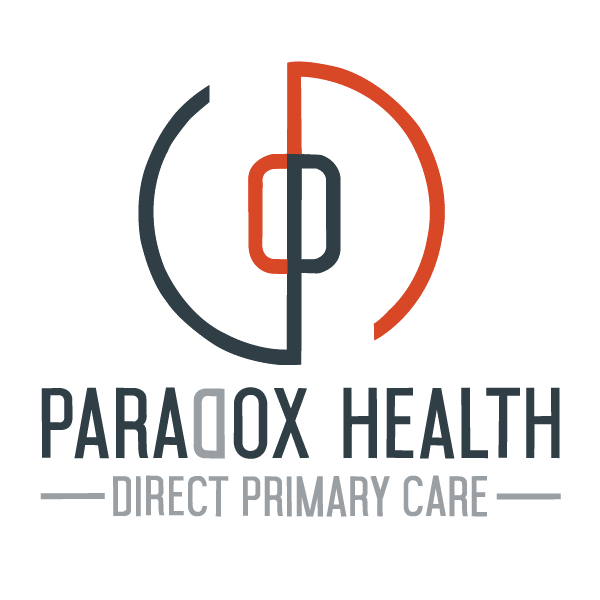When it comes to drug therapy for COVID-19, we have three options:
- Repurposed Drugs – usually off-patent and in use for a few decades (Ex: Dexamethasone, Hydroxychloroquine, Aspirin, Ivermectin)
- Experimental Drugs – New drugs developed by pharmaceutical companies (Ex: Remdesivir, Casirivimab and Imdevimab)
- Vaccines
(This does not include preventative techniques, namely, those aimed at strengthening our immune system. The top ones I preach are: sleep, exercise, nature walks, good relationships, and hot/cold therapy.It also does not include supplements shown to benefit immune function: Vit. D, Vit. C, Zinc, Quercetin, & Melatonin).
What is working? What is not?
Table 1 below is copied from the Frontline Covid-19 Critical Care Alliance (FLCCC) COVID-19 Management Protocol. This is a group of critical care doctors (think ICU doctor), who have developed their own treatment protocol for COVID-19 based on the available evidence and all studies published to date. To my eye, they appear to be the most objective group of doctors attempting to tackle this pandemic.
Table 1: Efficacy of pharmacologic therapy at different COVID stages*
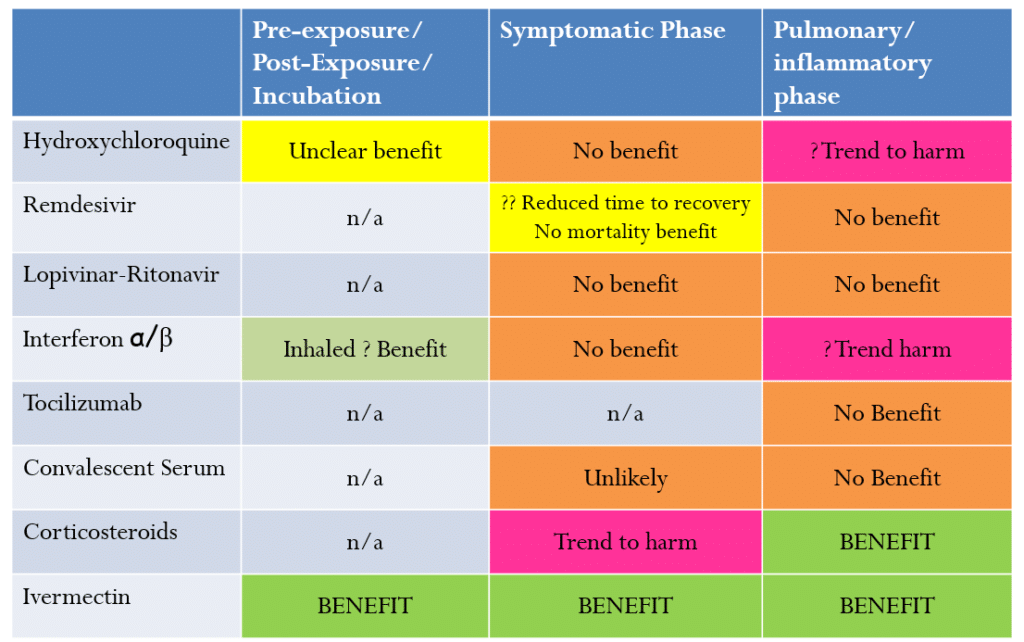
*Based on randomized-controlled trials
So far, I don’t believe the experimental drugs have shown themselves to be very beneficial (especially Remdesivir and convalescent plasma). The vaccines are now being rolled out and only time will be able to determine their effectiveness, especially with the new strains of SARS-CoV-2 that keep popping up. But in the shadows, a bit of a rumble has been stirring about a repurposed drug called Ivermectin. There have been numerous trials now over the past 6-9 months, many retrospective and observational but also a quite a few randomized, controlled, prospective trials, which all seem to be pointing in the same direction. In fact, I believe the data shows clear benefit in COVID-19 patients with this 40 year old drug therapy.
Ivermectin’s History
Ivermectin is an anti-parisitic drug. It was discovered first in 1975 in a rare form of bacteria on the beach in Japan and is used most commonly in developing nations. It won the Nobel Prize in Medicine in 2015 for essentially eradicating the most common form of permanent blindness. (Black flies transmit Onchocerca volvulus, causing “river blindness”). Lymphatic Filariasis in the third-world has also been largely eradicated because of Merck & Co. donating 570 million doses of Ivermectin to populations in need. The majority of these cases are in sub-saharan Africa. Thanks to Ivermectin, these diseases are now mostly behind us.
In is available over the counter in many countries across the world where parasitic infections are common. Examples incldue strongyloidiasis, ascariasis, and loa loa.
In the U.S. and other developed nations, it is most commonly used as second line therapy for lice, scabies, and pinworm.
Why is everyone talking about it right now?
In April of 2020, a study was published online, where scientists ran an in vitro experiment (think petri dish rather than in actual animals or humans), the results of which indicated that Ivermectin has significant impact on viral replication. At 48 hours, there was a 5000-fold reduction in viral RNA in the test group compared with the control group. This equated to a 99.8% clearance of viral RNA from the cells used in the culture medium. (This study was also published in the journal, “Antiviral Research,” in June of 2020).
This did get press from some outlets, but not much. One must keep in mind what was going on in the world at the time. Other drugs such as Remdesivir, convalescent plasma, monoclonal antibodies, and the hope of an efficacious vaccine were dominating the headlines. In time, however, more studies were done.
Studies have in fact been done on many different ways that Ivermectin can assist in getting out society back to some normalcy. These areas include: prophylaxis, post-exposure prophylaxis, outpatient treatment, treatment for those hospitalized with COVID-19, patients in the ICU setting including those on ventilators, and those with post-COVID effects, or the “long-haulers” as they have been termed. There is also countrywide, epidemiologic data in nations whose governments have started ivermectin distribution campaigns.
The following studies are of varying quality. But I should say from the outset, that both the quantity and quality of studies performed to date on Ivermectin far out-weighs those performed on hydroxychloroquine HCQ, which, we were all too willing to accept as efficacious, myself included. While I do think there is benefit to HCQ when used very early on in the disease course, I have ceased using it as the data on ivermectin has continued to mount.
The following is the cliff-notes version. If you want the most thorough evaluation, the FLCCC has compiled a 30 page meta-analysis here. A one-page list of the research papers discussed below is here.
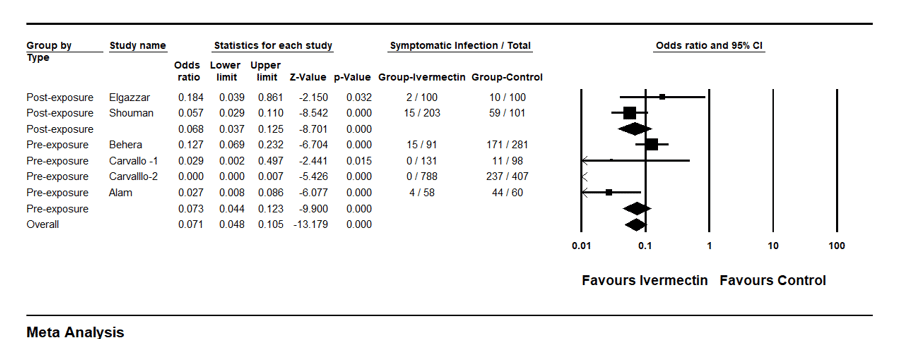
Prophylaxis – 7 studies
The best studies are out of Argentina. They were both hospital based, and performed as prophylaxis on healthcare workers (HCWs). The pilot study took place over 28 days and 11 of 98 people in the non-ivermectin group contracted the virus, while 0 of 131 in the ivermectin group contracted the virus. This paved the way for a multicenter study designed identically, just with more people. In this second study, taking place over two months, from 6/1/20 – 8/1/20, 237 of 407 HCWs not receiving Ivermectin contracted the virus, while 0 of 788 HCWs receiving the ivermectin protocol contracted the virus.
In India, this study found that a two-dose regimen of ivermectin, separated by 72 hours, resulted in a 73% reduction of COVID-19 in healthcare workers, as measured by a positive RT-PCR for SARS-CoV-2.
Post-exposure Prophylaxis – 2 studies
This study out of Egypt found a reduction in COVID-19 cases by 8% (10% in the non-ivermectin group & 2% in the ivermectin group) with post-exposure prophylaxis (taking ivermectin after exposure to the virus).
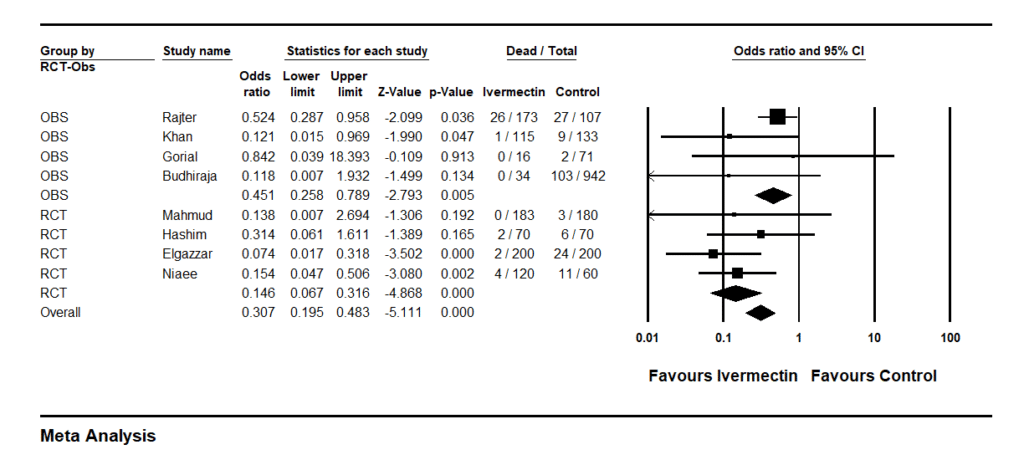
Outpatient Treatment – 10 studies
A paper out of Baghdad, Iraq compared mild to moderate COVID-19 patients treated as outpatients, 48 taking ivermectin vs. 48 taking doxycycline. The ivermectin group recovered in 6.34 days on average, whereas the doxycycline group took 13.66 days to recover.
Inpatient Treatment – 12 studies
An Egyptian study matched 200 mild/moderate severity infections, half treated with ivermectin and half with HCQ. There was 0% mortality in the ivermectin group compared with 2% mortality in the HCQ group. Ivermectin also shortened the mean hospital length of stay (LOS) from 15 days to 5 days.
The ICON study out of Florida was a retrospective study looking at various outcomes, including all-cause mortality in a cohort of 280 patients. Out of these, 173 received Ivermectin and 107 did not. There was an odds ratio of 0.27 after multivariate analysis for the Ivermectin group. This translates to a 73% decreased chance of dying from COVID-19 in the group that received Ivermectin. For those with severe pulmonary infection (defined as having an Fi02% >/= 50%) the mortality rates were 38.8% and 80.7% for the Ivermectin group and control group, respectively. That is a 41.9% reduction in mortality for the severely ill (Remdesivir has zero mortality benefit).
The same Egyptian study mentioned above, matched 200 severe infections, half treated with ivermectin and half with HCQ. There was 2% mortality in the ivermectin group compared with 20% mortality in the HCQ group. That’s an absolute risk reduction of 18%, which, means you’d only have to treat five ICU patients with Ivermectin in order to save one life! The mean hospital LOS was 6 days in the ivermectin group compared with 18 days in the HCQ group.
Long-haulers – 1 study
One study in Peru, involving 33 patients, found ivermectin to be useful in the treatment of the post-viral symptom patients we have termed “long-haulers.” This study, though very small, found 87.9% of the patients treated with just two doses of ivermectin had complete resolution of symptoms and an additional 7% reported symptom resolution with additional doses.
Epidemiology: Country-wide data stemming from government administration of ivermectin treatment programs
An international group analyzed data from Peru, where, the government distributed ivermectin nationwide (there are 25 states in Peru). A specific program called MOT ( gave an increased distribution of ivermectin to 9 of the states specifically. As a group, these states saw a drop in excess deaths of 74%, just 30 days after the start of the program.
There is country-wide data from Peru, Mexico, India, Paraguay, and Brazil, located here.
Discussion
One of my mentors in residency would commonly answer my juvenile questions with, “You don’t want to be a one-trick pony.” The application here being, of course, vaccines, dexamethasone, monoclonal antibodies, and social measures are all tools for us to combat this virus. But why exclude any other arrows in our quiver? Failure is much more likely when we rely on narrow strategies to take care of very complex problems. But if we are nimble and nuanced in our thinking and are able to formulate a more thoughtful approach to the problem, our chances of solving that problem are much greater.
A reason people are not very intimidated by influenza is the availability of Tamiflu. Getting that script for Tamiflu makes everyone feel like they’re going to be okay. The problem is, Tamiflu is almost completely ineffective. However, this is a clear example of de-escalation of fear via treatment. Now if we replace influenza with COVID-19, and replace Tamiflu with ivermectin, I can envision a very similar type of treatment protocol. We try and safely vaccinate as many people as possible, and for those who do end up contracting COVID-19, we treat them with ivermectin early and without hesitancy. Similar to flu, it would de-escalate the fear, but different from Tamiflu, it would actually make a difference in the disease course!
I have my own ideas as to why ivermectin has not been further investigated and discussed by the media, but thankfully it does not appear to be getting the HCQ censorship treatment from the medical journals and the media. The NIH recently changed their stance on it from “Don’t Prescribe” to “Cannot recommend for or against its use.” This seems to be making ripples in the U.S. and hopefully, those ripples will turn into waves.
I don’t know a single soul who wouldn’t like more data on ivermectin. Large RCTs are really yet to be done and they likely never will be as the drug is off-patent and so there is little to no monetary incentive for someone to take on this challenge. Ultimately, when you are a clinician such as myself, and you speak with someone on the phone who is suffering from COVID-19, you have to make a choice. You cannot say, “I want more data!” You have to make that choice, right there, in that moment.
A quick note on drug safety
Over the past 40 years, 3.7 billion doses of Ivermectin have been given across the world. It has a near unparalleled safety record. That is part of the reason why it is included on the WHO’s list of essential medications. As I mentioned previously, this medication is available over the counter in many countries.
